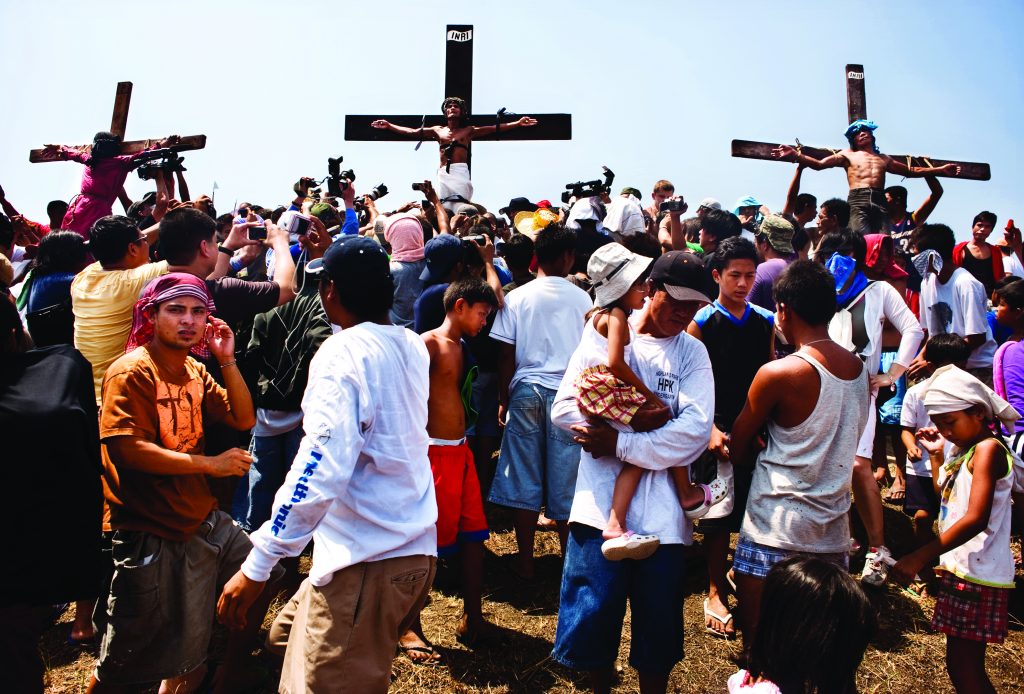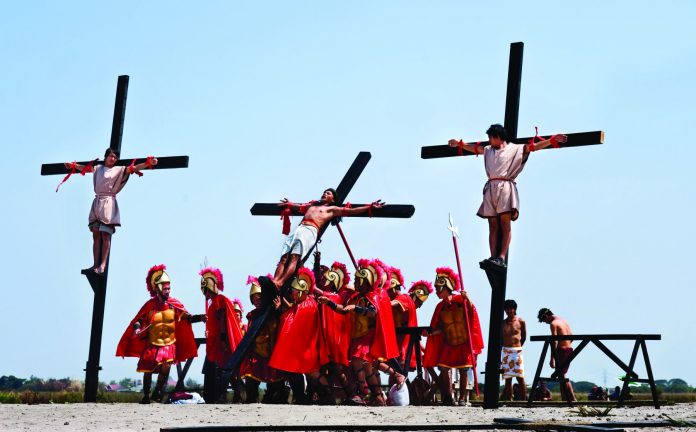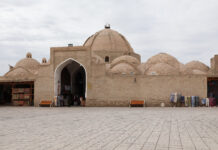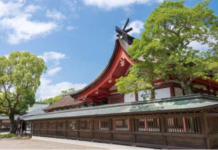Spanish colonisation brought Catholicism to the Philippines, where the passion for Christ is honoured in the goriest of Easter festivals.
Text Zigor Aldama
Photos Miguel Candela
The sight of people passing out is common during the Holy Week celebrations in San Pedro Cutud, a small town 75 kilometres northwest of the Philippine capital, Manila. But the spectacle of wilting figures is not due to the steaming heat – it is the result of a brutal representation of the crucifixion of Jesus Christ marking Lent, the six-week religious observance that starts on Ash Wednesday and concludes on Easter Sunday. According to the religious scriptures, Jesus Christ underwent agonising suffering before sacrificing himself for the salvation of mankind. Religious devotees re-enact his final days in acts of penance.

Unlike many other parts of the world where the passion of Christ is remembered in a theatrical fashion (with fake blood and actors carrying a light cross on their backs for a short period of time), Catholic believers in San Pedro Cutud choose to replicate the event in all its gory glory. Devotees partake in the three acts of penance: They carry the wooden cross for 30 kilometres on Holy Wednesday while representative Roman soldiers lash their backs with bamboo sticks; they whip themselves throughout Thursday and Good Friday (some go as far as to maim their flesh with razor blades); and in the third and final act, they are nailed to a cross as Christ was.

The Catholic church doesn’t officially sanction these rituals, but they have – regardless of their severity – become a tourist attraction, particularly for fellow believers. “I can’t believe how strong the faith of these men is. It’s hard to watch because it’s very violent. There is blood everywhere. But it’s a true reminder of what Christ went through,” says Eduardo Maldonado, a fervent Christian who travelled to witness the “bloody Easter” from Spain. He adds: “I feel very moved to see how Filipinos can keep traditions even better than those who brought them here. We are losing faith in Europe, but it’s comforting to see how it remains strong here.”

Spanish colonialists brought Christianity to the Philippines when they arrived in the 16th century, and they remained until the 19th century, spreading their Christian message. Their language didn’t really stick (although Tagalog retains many Spanish words), but their religion took root. Today, the Philippines proudly declares itself as the only Christian nation in Asia with more than 86 percent of the population listed as Roman Catholic.
Despite this extensive infiltration of Catholicism in the Philippines, San Pedro Cutud only started recreating the last days of Christ a century ago; it wasn’t until 1961 that 13-centimetre nails were driven into the hands and feet of agreeing parishioners in the procession. By 1992, the show took a turn for the grislier with the introduction of whips, which have since remained in the ritual – even though some bishops and politicians have attempted to ban such usages in an effort to tone it down.

Moreover, the locals admit that their bloody Easter has become a good source of income, which explains why other towns in the north of Luzon’s island have started to dramatise the Holy Week in the same fashion. Some now allow female penitents to participate in what many denounce as an exploitation of women – to make the recreation more attractive to outsiders.
Until a decade ago, foreigners were also welcome to join in the voluntary suffering with the locals, but the authorities intervened. “A British [visitor] even suffered a panic attack when he was about to get nailed. Their faith is not as unbreakable as ours,” shares a penitent named Beningno, whose wife heals the wounds of participants – caused by lashes.
Rubén Enaje declares that he would never have a change of heart. He has been nailed to the cross almost 30 times, which is every year for the second half of his life. “I wanted to thank God for saving my life when I fell from scaffolding in 1984,” he says. “I promised Him I’d take part in the Holy Week celebrations for 20 years, but I keep doing it because the two times I’ve tried to stop, my wife fell ill. One time she was even close to death, so I swore to keep the tradition.”

Not far from where Enaje is getting ready for the most gruesome part of the dramatisation, another devotee, Rolando Ocampo, 63, tells a similar story: “I started to participate in the Holy Week celebrations when I was only 17. At that time, I only took part in the procession to the San Fernando cathedral on Wednesday.” But back in 1990, he had a good reason to go all the way to the cross. “My wife was expecting our first son and the doctor said she was in great danger because there were problems with the pregnancy. Both could die. So I asked God to spare their lives and I offered to feel His pain every year in exchange. He was magnanimous, and I’m now keeping my word,” he shares.
Both Enaje and Ocampo believe that suffering the way Christ did will keep them away from sin. They are now somehow accustomed to the long walks carrying the cross, with the crude spikes of steel piercing their hands. “I fainted the first time and my mother cried a lot. It took a long time to heal. But after a few years, it doesn’t hurt that much anymore,” says Enaje. Still, his wife is always close by to check that nothing goes wrong.

At the cathedral, monsignor Ricardo Serrano feels more and more worried with every passing year: “Some penitents believe that they can wash away their sins by slashing their backs and shedding blood. Sacrifice will set them free, they trust. I don’t share their opinion, and I will never encourage such beliefs, but I can’t condemn their faith either,” he shares.
Outside, a large crowd gathers to watch the procession of penitents with bloodied bodies. Some faint, but then stand up again and keep going – until their legs can hold no more.

Emergency services are always busy at this time of the year. “We try to keep people away from infections. Fortunately, most cuts are superficial and not as bad as they look,” confides a nurse on the scene, who requests to remain anonymous.
Some tourists look on in disgust, and many turn their eyes away from the scene when the devotees are nailed to the cross. It’s a macabre show, and not for the faint-hearted. Despite the throngs of people, the opinion of this audience is divided. Some – like Maldonado – admire the strength and devotion of the penitents; others – many of them atheists – consider San Pedro Cutud’s commemoration of the Holy Week as an anachronistic ritual that is out of place in the 21st century.
One thing is certain: It does not leave the spectators indifferent.
Related: Discover The Silk Road
Related: Games of the Great Khan
Related: Baptism of Fire
For more stories and photographs from this issue, see Asian Geographic Issue 128, 2017











